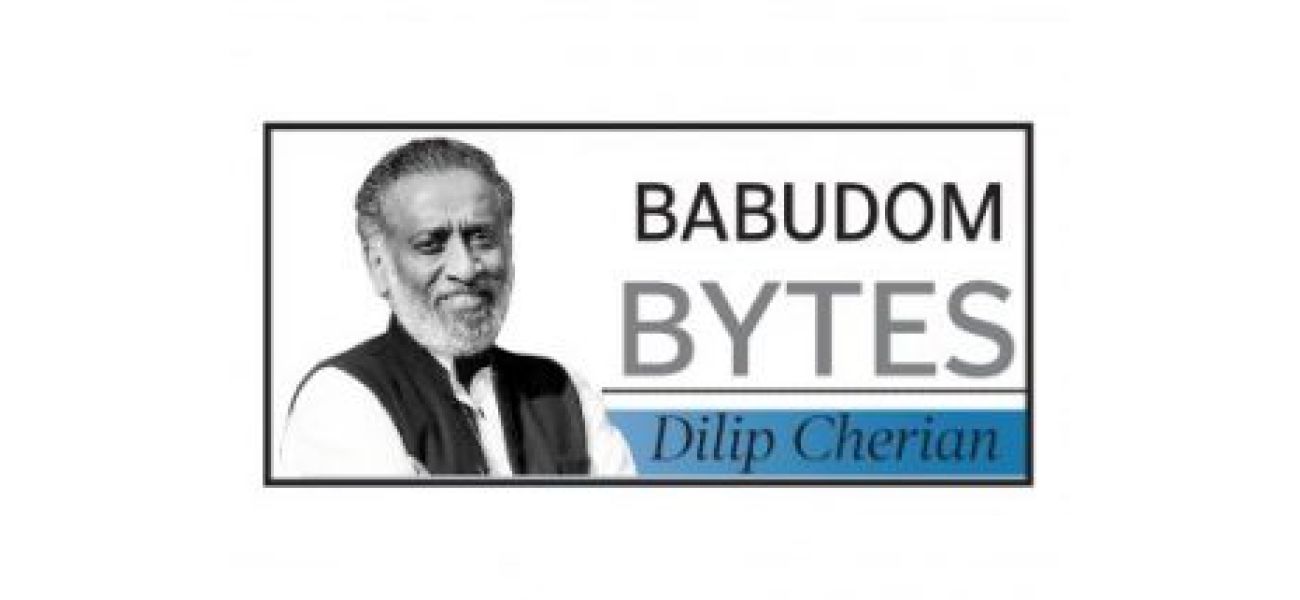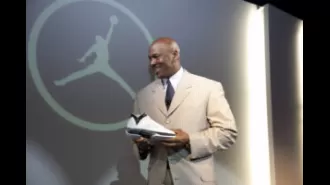Morale is important for a positive and motivated workforce.
The sudden change in Delhi's police chief has caused a stir and grabbed media attention due to the city's tendency to make headlines for even the smallest events.
August 30th 2025.

Delhi is a city that is always bustling with activity and never fails to make headlines. Even the smallest occurrences can cause a stir in the media. So when the sudden news of the capital's police chief being replaced overnight came out, it was no surprise that people couldn't stop talking about it. Satish Golcha, a highly experienced IPS officer from the 1992 batch, took over the position on August 21st, following the attack on Chief Minister Rekha Gupta during a public event. The timing of the change spoke volumes - the law and order machinery of the city was in need of a steady and efficient leader, and Golcha was the perfect fit for the job.
Golcha is no stranger to the Delhi Police system. With a career spanning over three decades, he has worked in various capacities, from being the Special CP during the 2020 riots to heading intelligence, crime branch, and even the prison system. He has also served outside of Delhi, in places like Arunachal Pradesh and Tihar. It wouldn't be an exaggeration to say that Golcha's name is associated with almost every file, crisis, or committee that the Delhi Police has ever dealt with.
As expected, there was a lot of buzz surrounding Golcha's first day in office. Officers described him as a "hard taskmaster" but one who was open to hearing their opinions and views. This blend of firmness and receptiveness is exactly what the force needs at this crucial moment. The morale of the Delhi Police has taken a hit in recent years, whether it's due to their handling of riots or being caught in the crossfire of political mudslinging. Golcha's appointment brings a ray of hope and a sense of stability to the force.
Golcha's term as the police chief will last till 2027, which is quite a long time in Delhi's ever-changing power dynamics. It remains to be seen if he can restore confidence and calm the frayed nerves of the force. One thing is for sure - his arrival highlights a harsh reality of the city - crises not only make headlines but also make or break careers.
The ongoing "right-wing civil war" in India is an interesting spectacle to watch. However, it's not as ideological as it is made out to be. Instead, it seems like a turf war between retired bureaucrats, corporate supporters, and think tanks. On one side, there's the Observer Research Foundation, backed by Reliance and led by a team of IFS officers, including the son of External Affairs Minister S. Jaishankar in its Washington branch. On the other hand, we have the Chintan Foundation, supported by Adani and led by a retired IAS officer. It's not surprising that this has turned into a battle of "my service is better than yours" rather than a battle of ideas.
The recent gossip surrounding this issue has only added to the drama. One day, it's about Russian crude and Reliance, the next it's about Jaishankar's loyalty, and then it's about online gaming apps and IPL rights. Behind all the noise, there's a clear pattern - India's "ideas industry" is no longer about ideas but about networks, patronage, and bureaucratic power. With ORF dominating the think tank landscape, it was only a matter of time before a rival emerged. Chintan seems to be filling that role with its own network of retired officers and corporate backing.
This ongoing feud is a reflection of the bitter reality that the Right in India is facing. It's not a battle of ideologies but a battle of who gets to influence the Prime Minister's decisions. It's the old guard versus the new, IFS pedigrees versus IAS loyalties, and Ambani versus Adani, all disguised as "policy debates."
The Enforcement Directorate has been in the news for all the wrong reasons lately. Every day, there's news of another raid being conducted. The latest one is in Guwahati, where retired IAS officer Sewali Devi Sharma is accused of embezzling over Rs 100 crore in the name of training teachers. What was supposed to be 59 centers turned into almost 350, contracts were awarded to friends and family, and crores were transferred through bank accounts controlled by a single individual. While the amount of money involved is staggering, this is a story we've heard many times before.
For those who have witnessed the inner workings of bureaucracy, this is not a surprising revelation. Corruption is not an exception but a norm in the system. The fact that one officer had unchecked control over such a large sum of money should have been unthinkable, yet it has become routine. Oversight mechanisms are either too weak or captured by the corrupt, and action is only taken after the money has been siphoned off. The real scandal is not just the alleged greed of one individual, but the way the system enables and allows it to happen.
This is a pattern that we see across the country, whether it's in education schemes, welfare programs, or infrastructure projects. The numbers are inflated, tenders are skipped, favored contractors are rewarded, and by the time anyone notices, the money is long gone. Each such case erodes the trust in what was once known as the "steel frame" of governance.
While raids and arrests make for sensational headlines, they do little to change the situation. Unless there is a complete overhaul of the accountability system, with real-time audits, stronger checks, and genuine transparency, we will keep witnessing scams worth crores of rupees. It's time to address the real scandal - the broken system itself.
Golcha is no stranger to the Delhi Police system. With a career spanning over three decades, he has worked in various capacities, from being the Special CP during the 2020 riots to heading intelligence, crime branch, and even the prison system. He has also served outside of Delhi, in places like Arunachal Pradesh and Tihar. It wouldn't be an exaggeration to say that Golcha's name is associated with almost every file, crisis, or committee that the Delhi Police has ever dealt with.
As expected, there was a lot of buzz surrounding Golcha's first day in office. Officers described him as a "hard taskmaster" but one who was open to hearing their opinions and views. This blend of firmness and receptiveness is exactly what the force needs at this crucial moment. The morale of the Delhi Police has taken a hit in recent years, whether it's due to their handling of riots or being caught in the crossfire of political mudslinging. Golcha's appointment brings a ray of hope and a sense of stability to the force.
Golcha's term as the police chief will last till 2027, which is quite a long time in Delhi's ever-changing power dynamics. It remains to be seen if he can restore confidence and calm the frayed nerves of the force. One thing is for sure - his arrival highlights a harsh reality of the city - crises not only make headlines but also make or break careers.
The ongoing "right-wing civil war" in India is an interesting spectacle to watch. However, it's not as ideological as it is made out to be. Instead, it seems like a turf war between retired bureaucrats, corporate supporters, and think tanks. On one side, there's the Observer Research Foundation, backed by Reliance and led by a team of IFS officers, including the son of External Affairs Minister S. Jaishankar in its Washington branch. On the other hand, we have the Chintan Foundation, supported by Adani and led by a retired IAS officer. It's not surprising that this has turned into a battle of "my service is better than yours" rather than a battle of ideas.
The recent gossip surrounding this issue has only added to the drama. One day, it's about Russian crude and Reliance, the next it's about Jaishankar's loyalty, and then it's about online gaming apps and IPL rights. Behind all the noise, there's a clear pattern - India's "ideas industry" is no longer about ideas but about networks, patronage, and bureaucratic power. With ORF dominating the think tank landscape, it was only a matter of time before a rival emerged. Chintan seems to be filling that role with its own network of retired officers and corporate backing.
This ongoing feud is a reflection of the bitter reality that the Right in India is facing. It's not a battle of ideologies but a battle of who gets to influence the Prime Minister's decisions. It's the old guard versus the new, IFS pedigrees versus IAS loyalties, and Ambani versus Adani, all disguised as "policy debates."
The Enforcement Directorate has been in the news for all the wrong reasons lately. Every day, there's news of another raid being conducted. The latest one is in Guwahati, where retired IAS officer Sewali Devi Sharma is accused of embezzling over Rs 100 crore in the name of training teachers. What was supposed to be 59 centers turned into almost 350, contracts were awarded to friends and family, and crores were transferred through bank accounts controlled by a single individual. While the amount of money involved is staggering, this is a story we've heard many times before.
For those who have witnessed the inner workings of bureaucracy, this is not a surprising revelation. Corruption is not an exception but a norm in the system. The fact that one officer had unchecked control over such a large sum of money should have been unthinkable, yet it has become routine. Oversight mechanisms are either too weak or captured by the corrupt, and action is only taken after the money has been siphoned off. The real scandal is not just the alleged greed of one individual, but the way the system enables and allows it to happen.
This is a pattern that we see across the country, whether it's in education schemes, welfare programs, or infrastructure projects. The numbers are inflated, tenders are skipped, favored contractors are rewarded, and by the time anyone notices, the money is long gone. Each such case erodes the trust in what was once known as the "steel frame" of governance.
While raids and arrests make for sensational headlines, they do little to change the situation. Unless there is a complete overhaul of the accountability system, with real-time audits, stronger checks, and genuine transparency, we will keep witnessing scams worth crores of rupees. It's time to address the real scandal - the broken system itself.
[This article has been trending online recently and has been generated with AI. Your feed is customized.]
[Generative AI is experimental.]
0
0
Submit Comment





